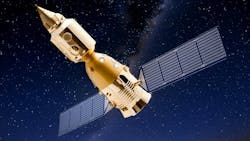Pushing the Power Density in Outer Space Systems (Download)
Generating electricity at nighttime using renewable resources has become extremely important since a billion people on Earth are living off some electric grid. With no solar power at night, users may instead employ the coldness of the universe as a thermodynamic resource.
Specifically, users will be able to use a heat engine that can extract energy using the temperature gradient between the ambient environment maintained close to 300 K and outer space steady at approximately 3 K. Such a method will enable efficient dumping of excessive heat from the heat engine output through a stable low-temperature cold sink, namely outer space.
